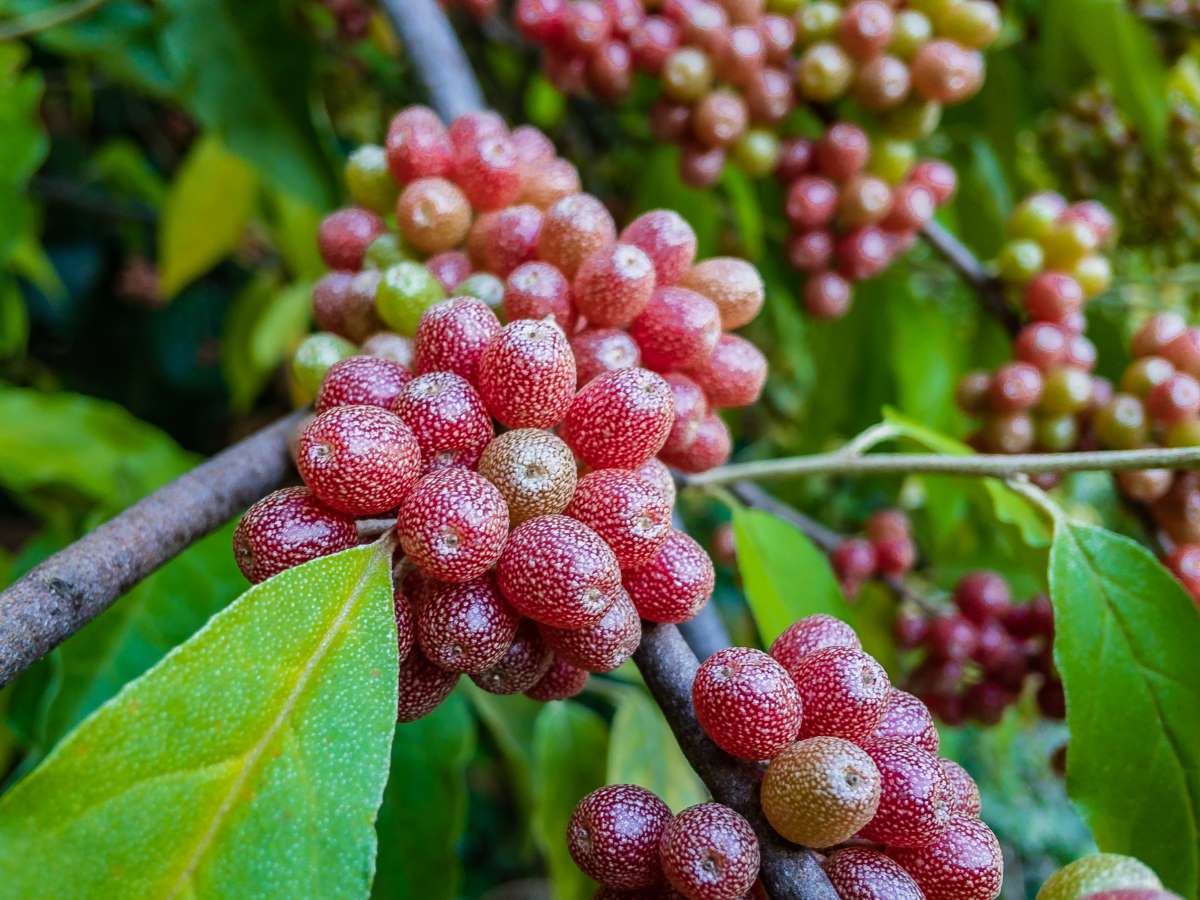Description
Shepherdia – Buffalo Berry –
There are 3 dioecious, evergreen or deciduous shrubs or small trees in this genus. They are found naturally occurring in rocky and sandy habitats, and on streambanks, in North America. They produce opposite, simple, ovate or oblong leaves and, in spring, before the leaves appear, bear short spikes or racemes of tiny, tubular, petalless flowers, each with a 4 lobed calyx. On female plants , the flowers are followed by rounded, red or yellowish red fruits. Values for their ornamental fruit and foliage, they are suitable for the back of a mixed or shrub border, they aare particularly useful on poor, dry soils, and excellent for sites in exposed coastal regions. Male and female palnts must be grown together to obtain fruit.
Grow in moderately fertile, well drained, neutral to slightly alkaline soil in full sun.
Prone to powdery mildew, rust, white heart rot, septoria leaf spot, and the larvae of some Lepidoptera species including Engrailed and coleophora elaegnisella.
S. argentea – Silver Buffaloberry – Silverberry – This upright, bushy, deciduous shrub, often tree like from North America grows to 12′ feet tall and wide. From thorny branches it carries opposite, oblong leaves, to 2″ long, covered in silvery scales. In spring , it bears insignificant,, 4 sepal yellow green flowers, followed on female plants by ovoid, sour tasting, pea sized, glossy, bright red fruit, 1/4″ long.
Zones 3-9




